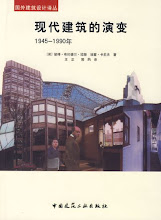
Few significant new urban spaces date from the post-1945 period, although one major example would be the square and facade of the Stazione Termini in Rome, completed for the Holy Year of 1950. The original project was implemented by Angiolo Mazzoni from 1938-42, and the station was completed between 1947-50 by teams working under Eugenio Montouri and Annibale Vitellozzi. In 'Italy Builds', it is the one contemporary exception to the series of contextless object buildings, and with regard to its exploitation of its major contextual feature Kidder Smith gushes
“This fourth-century-B.C. wall in the very midst of this startling modernity emphasizes as nothing else could to the traveller the roots and never-dying cultural contribution of the most fascinating city in the world.” (Kidder Smith 1955: 232)
In the completed project a great glazed hall communicated directly with the piazza outside. The sense of contemporaneity this scheme produced was modified by two elements, the presence of a section of the Servian Wall which passed through the facade at an oblique angle and formed one boundary to the space, and the attachment of the new hall with its over sailing roof to the rather more monotonous forms of the station beyond designed during the fascist period. The asymmetrical vault of the main roof reflected the profile of the Servian Wall so that its silhouette could be appreciated by waiting passengers. The cantilevered roof and canopy were offset compositionally by the wall of office accommodation behind it, with ribbons of continuous windows coursing across the travertine facade which acted as a modern screen to the arcuated forms of the station side buildings. The cross galleria, open at either end and connecting into the street network of the city was identified as serving as a mid-twentieth century equivalent to Milan’s Galleria Vittorio Emanuele, if without that structure’s enduring glamour. The axial arrangement of the earlier designs survives in the disposition of ticket hall and restaurant either side of the main through route, and the station can therefore be seen to represent the political situation of the country as an open, modern, democratic veneer was placed over a substantial fascist legacy. The openness of the new facade helped disperse passengers along the elevation to the Piazza del Cinquecento, although the original intended relationship to the public space has not survived the increase in road traffic at this important urban node. The Stazione Termini demonstrated that skill in the design of the public realm had not disappeared with fascism, and that new architectural languages could be used to create significant contemporary places.






No comments:
Post a Comment